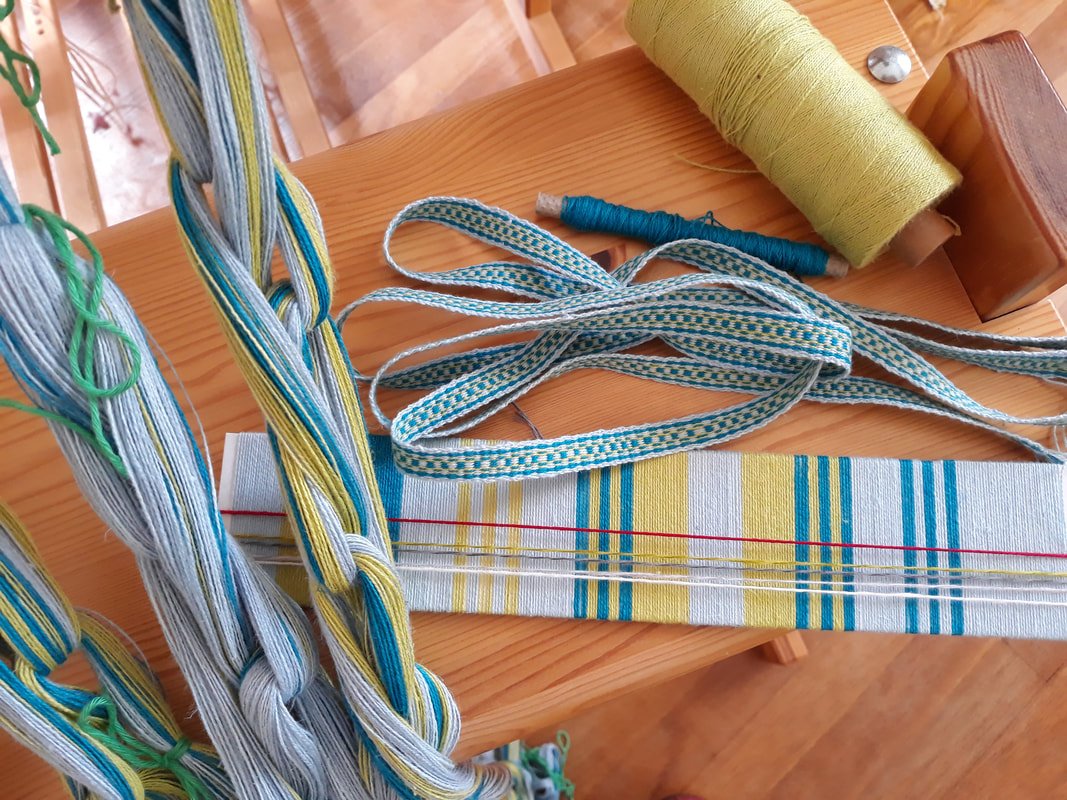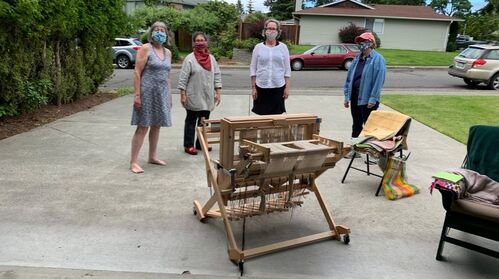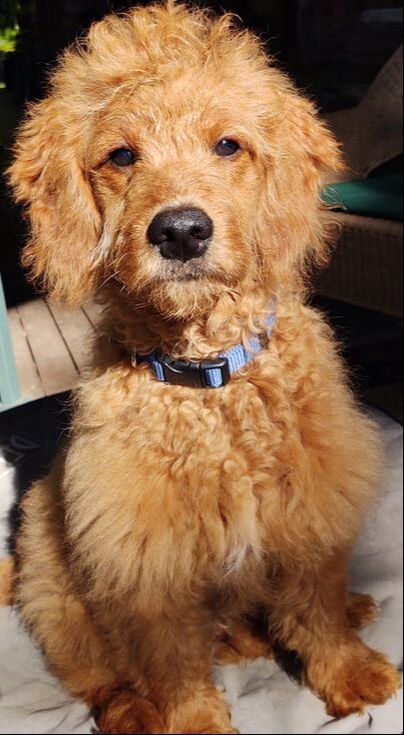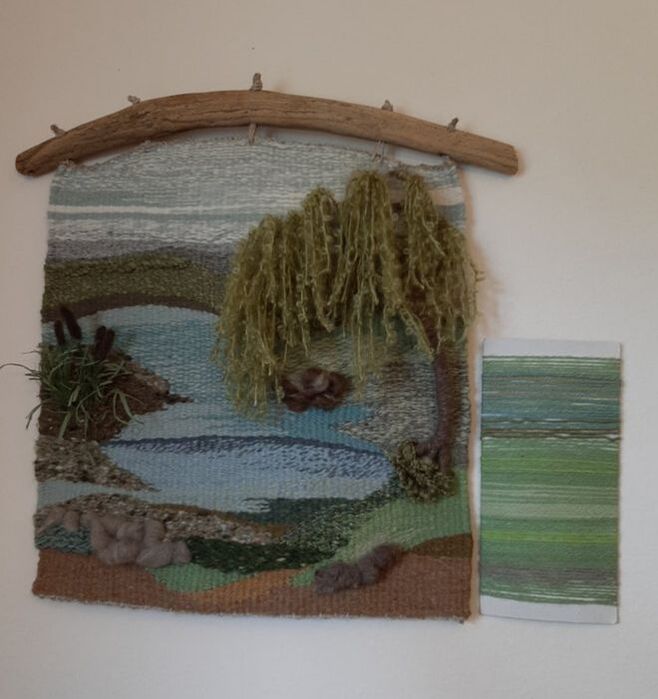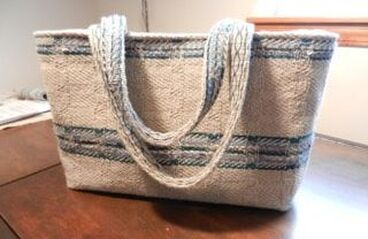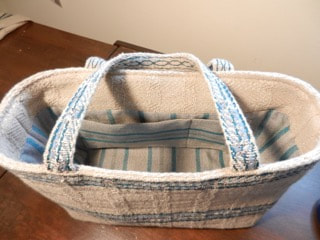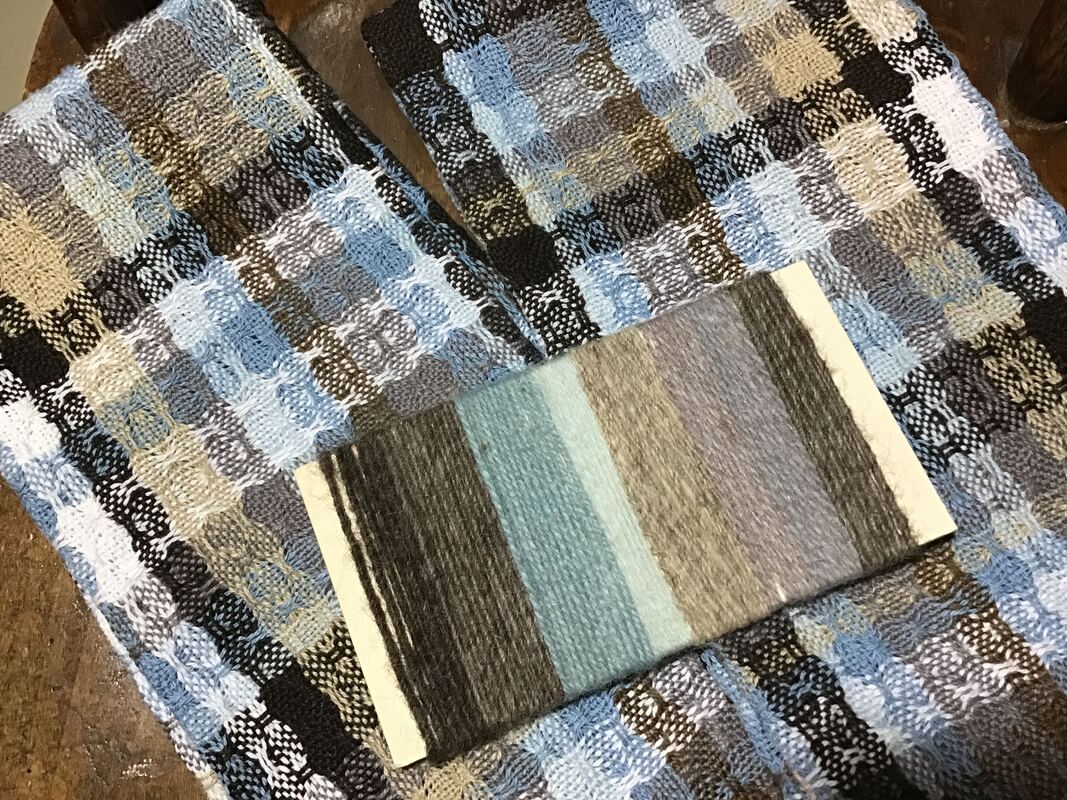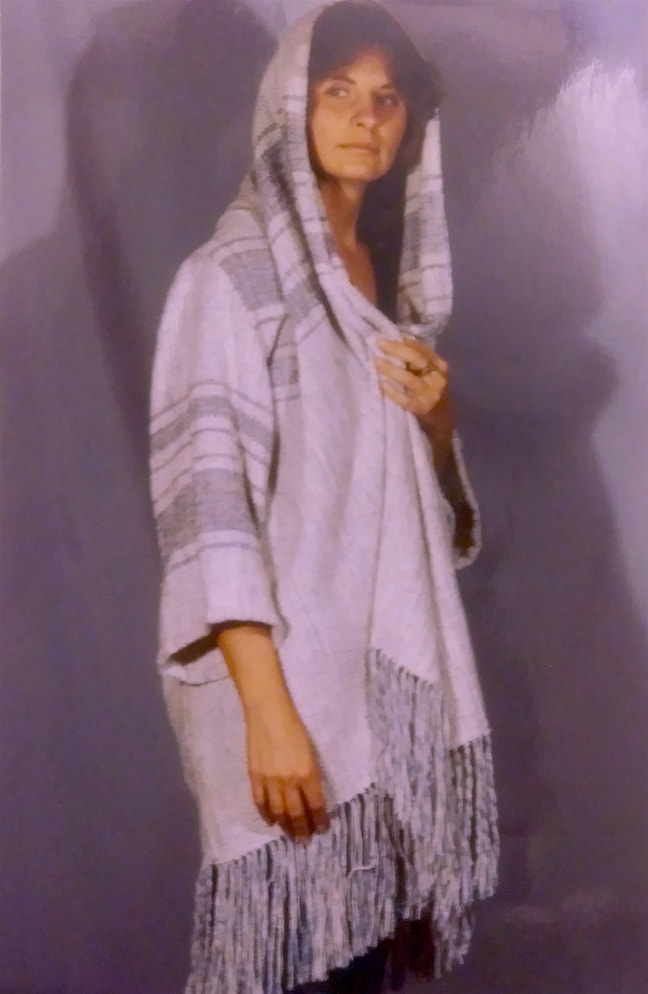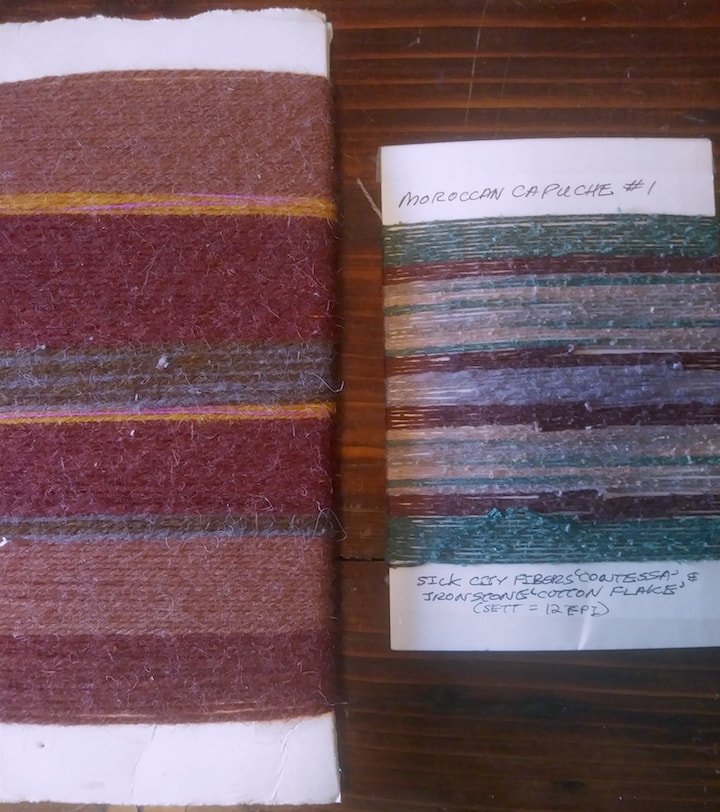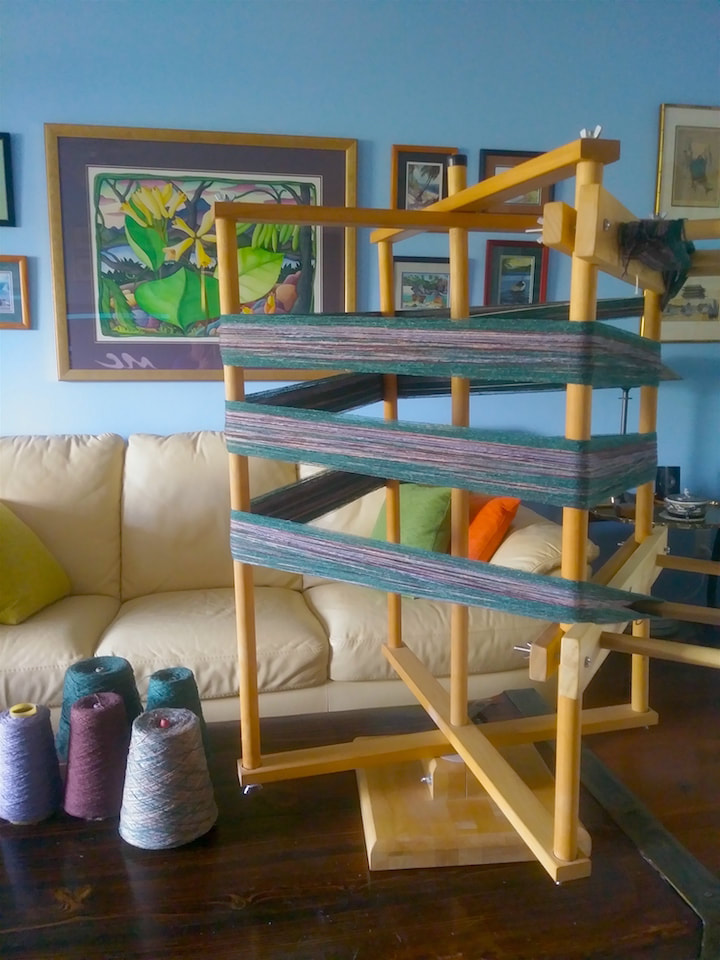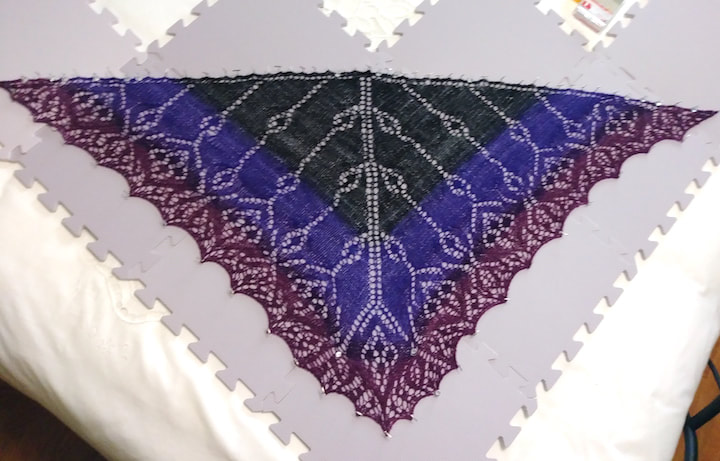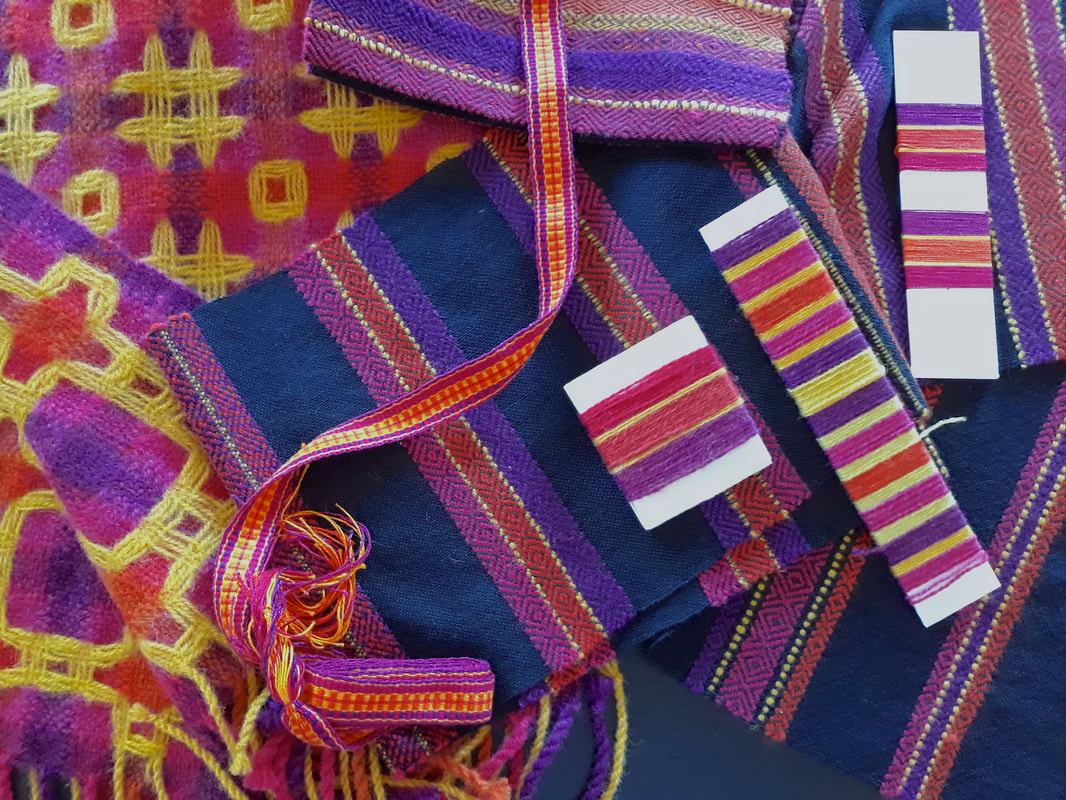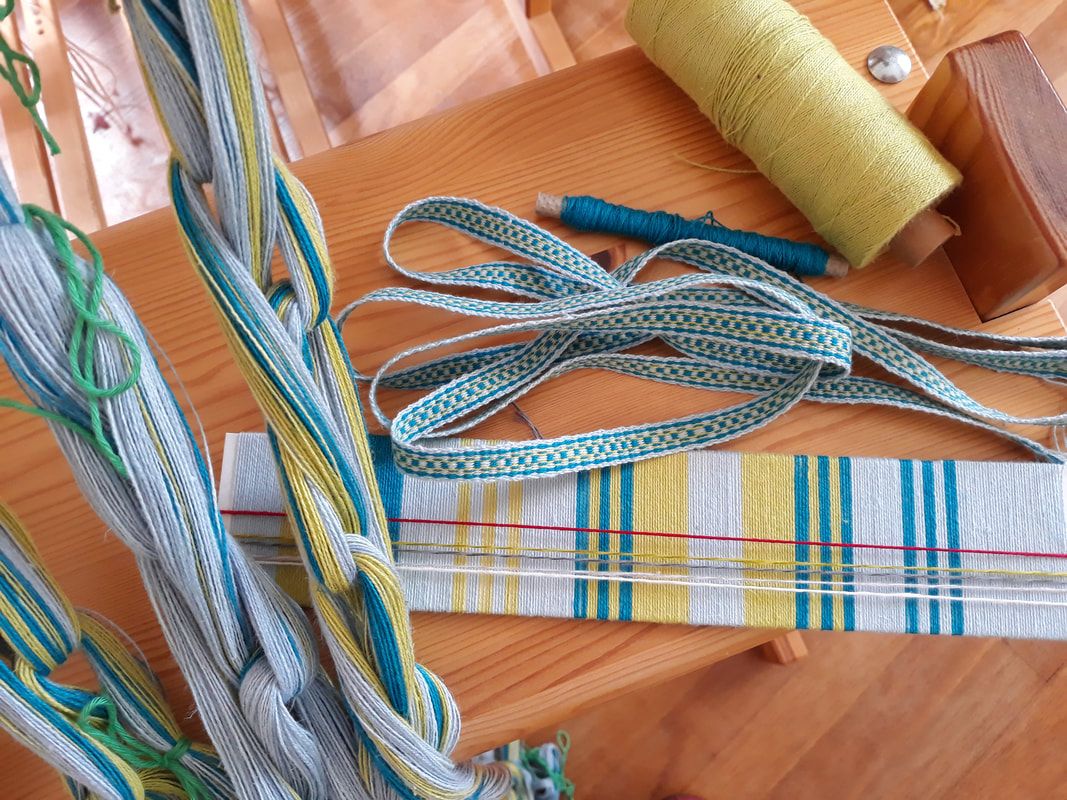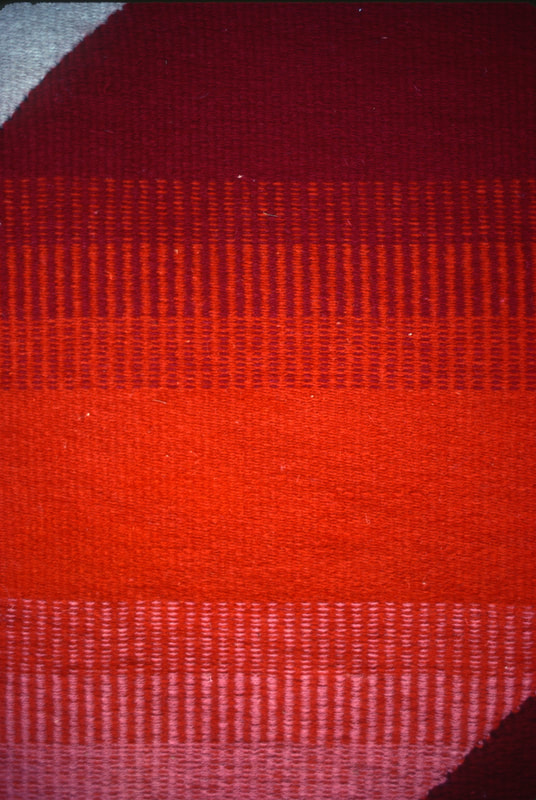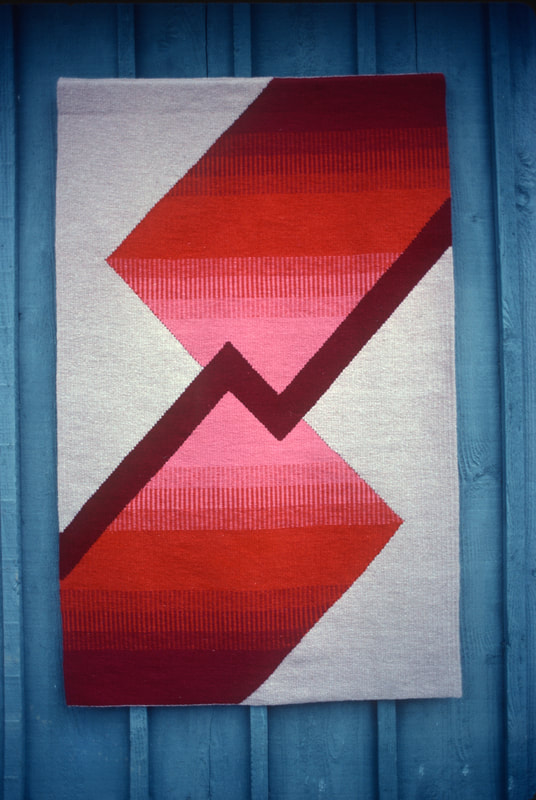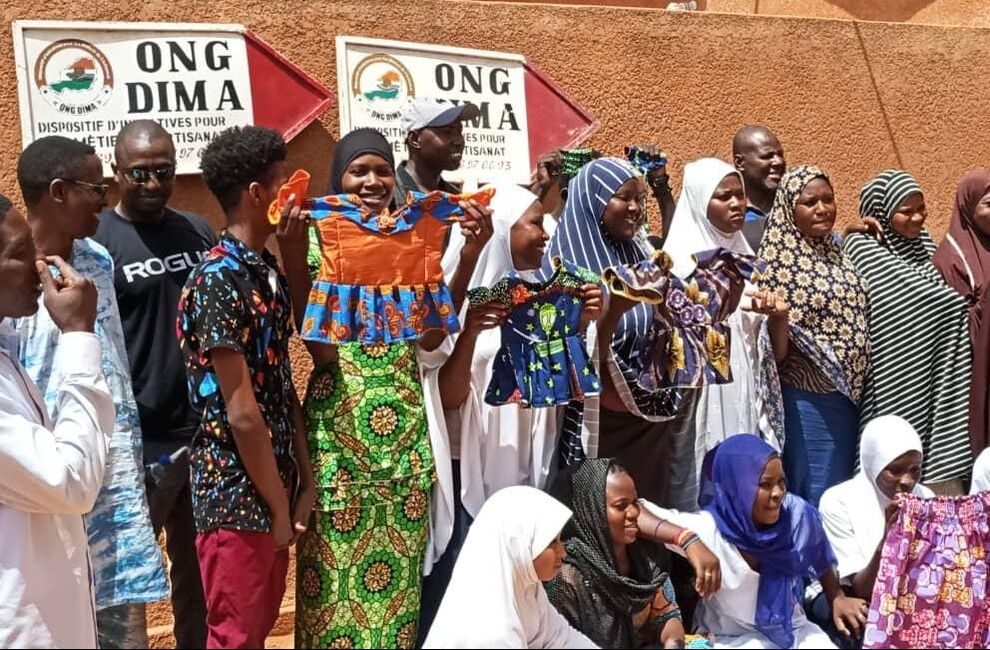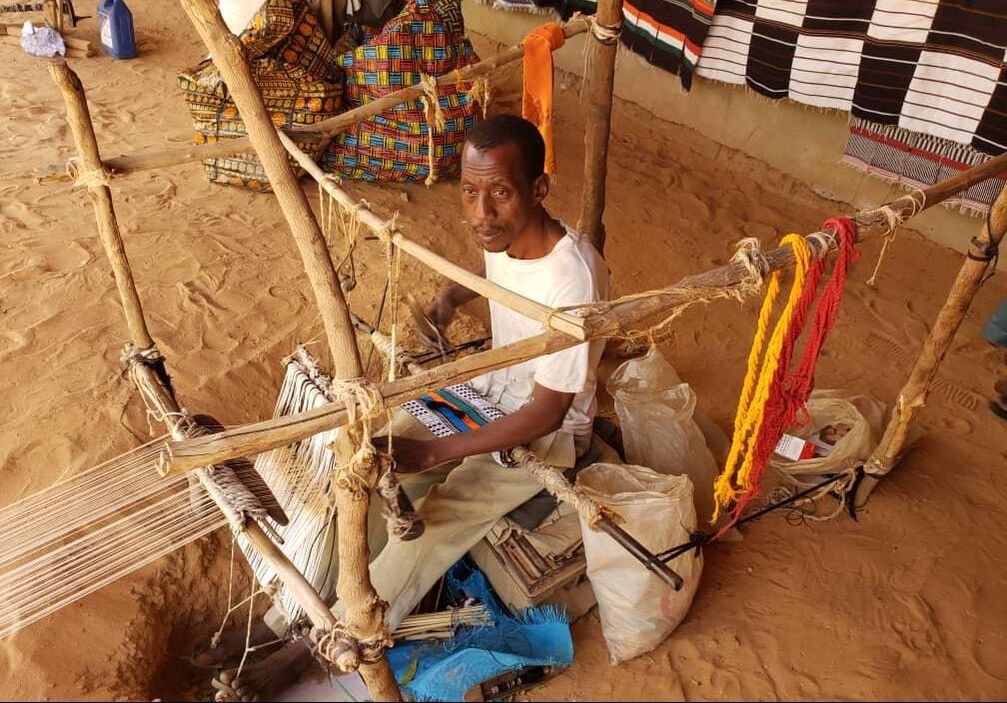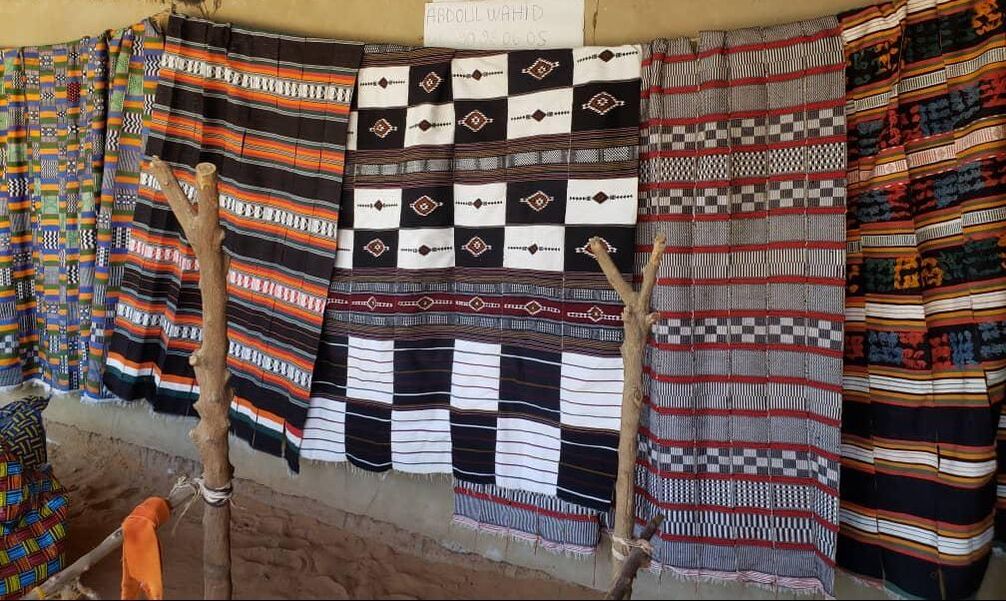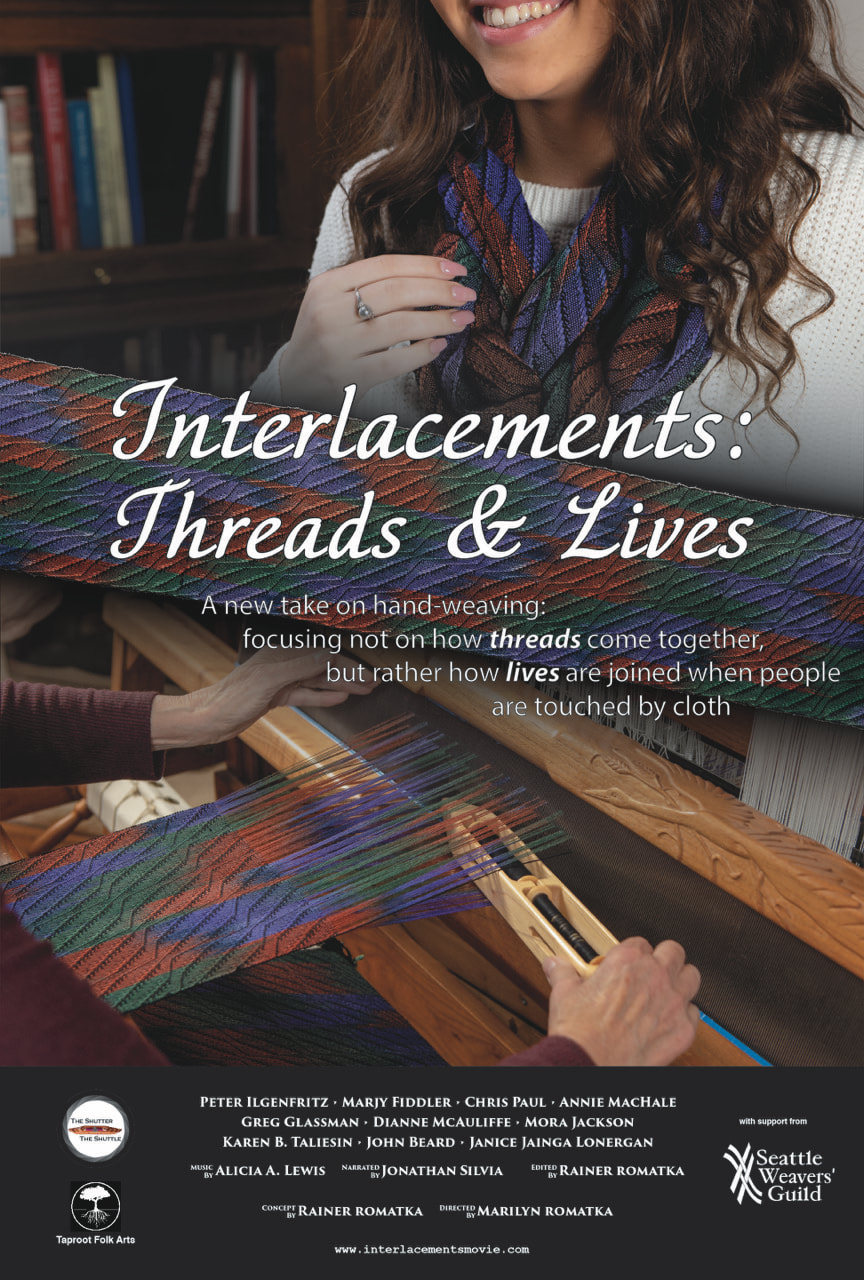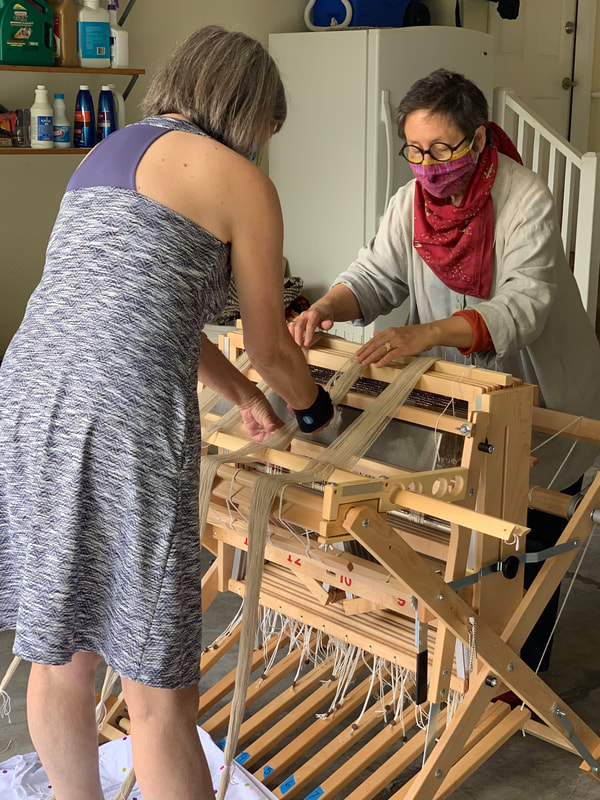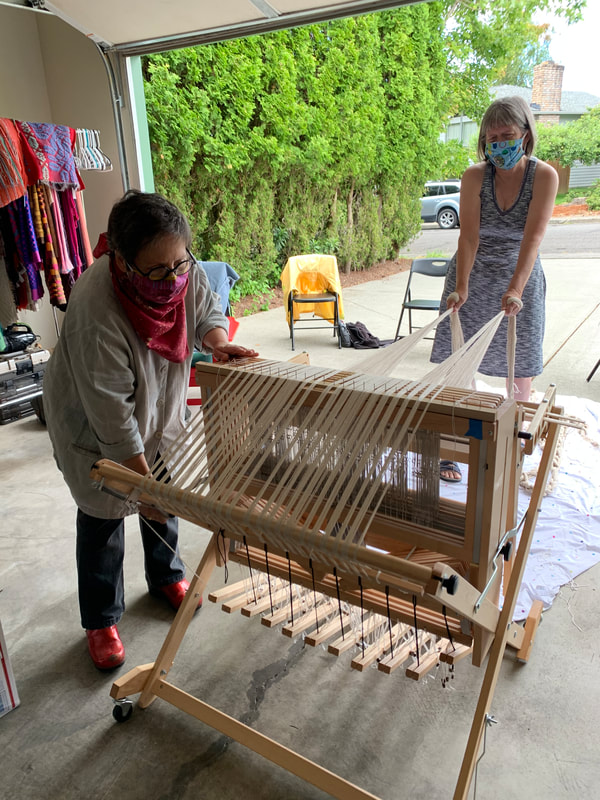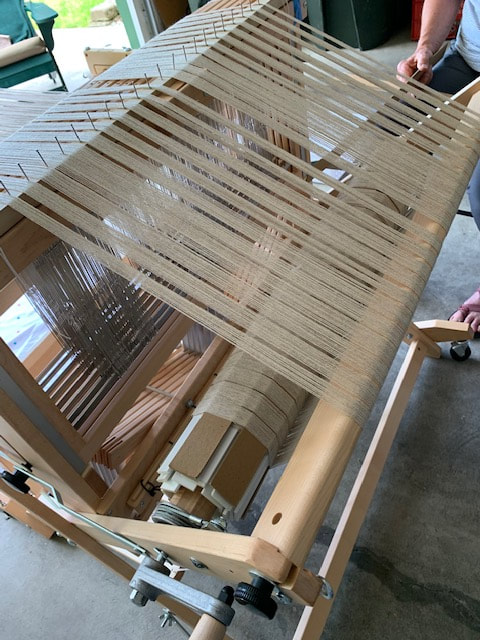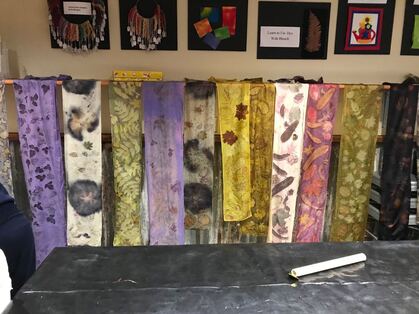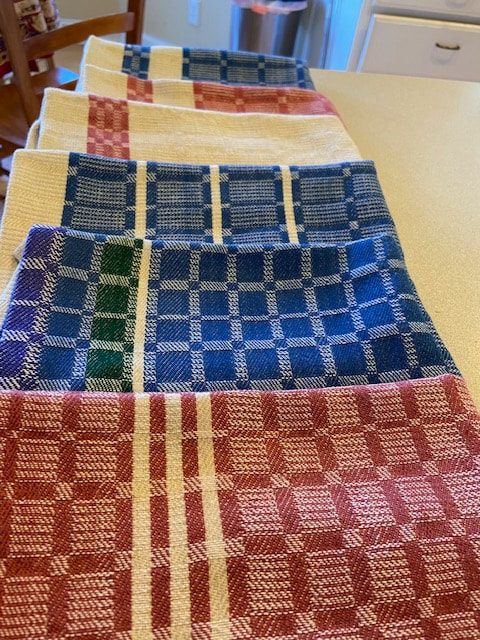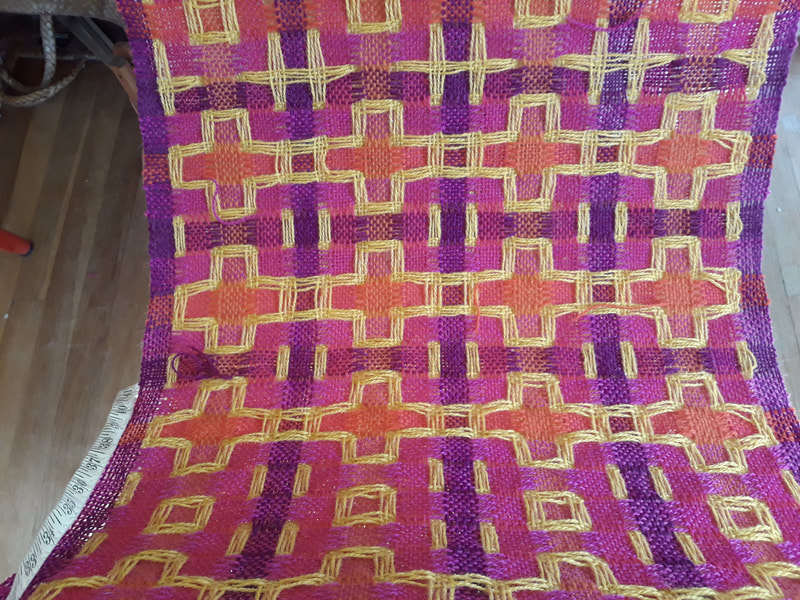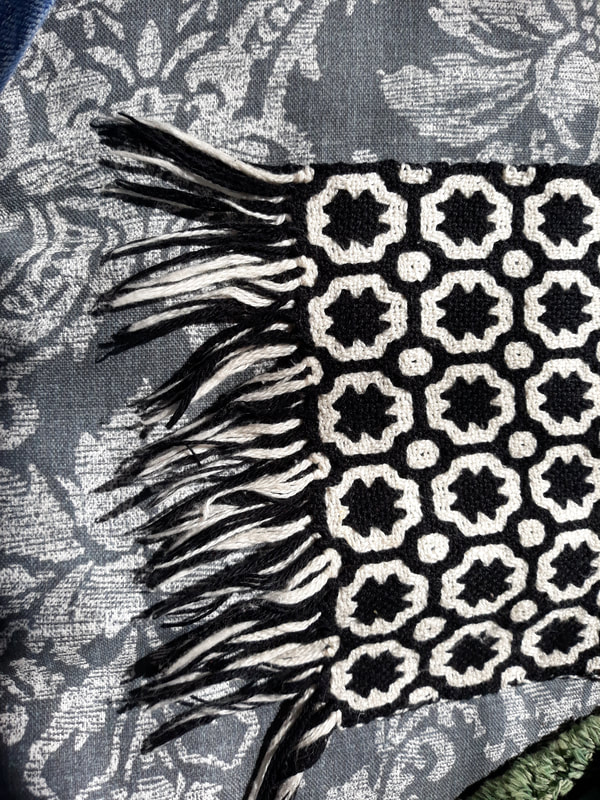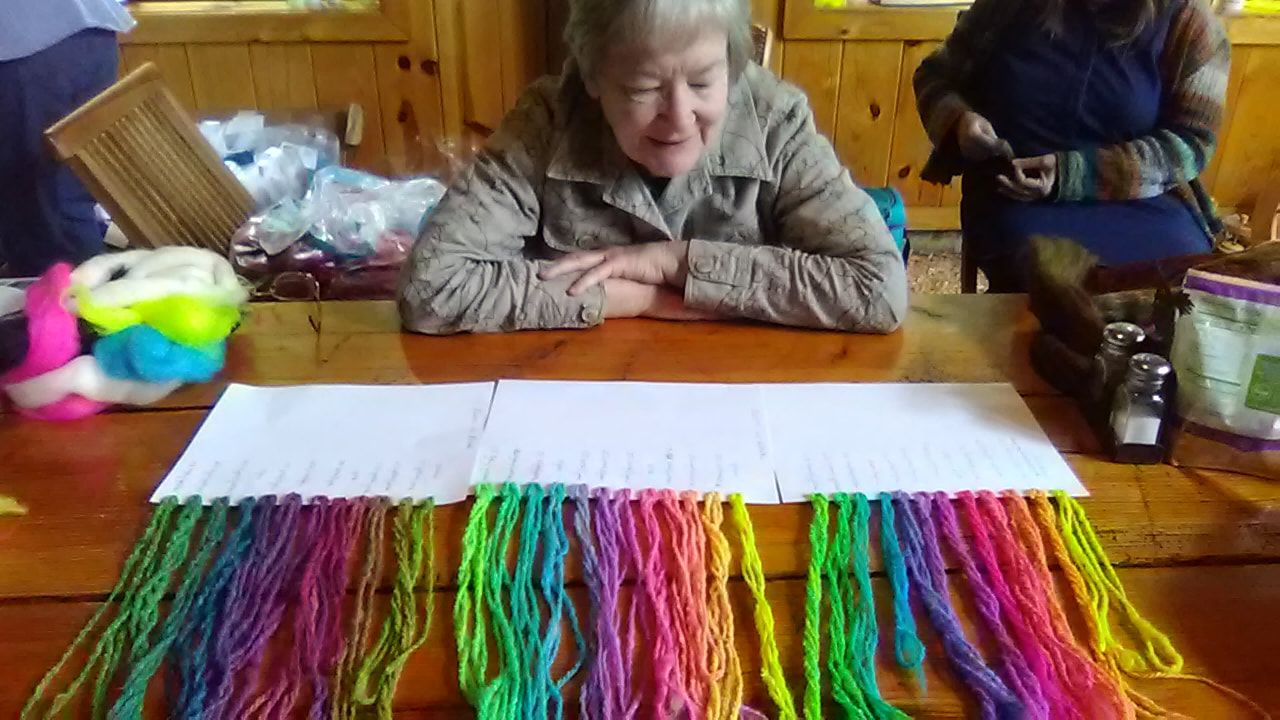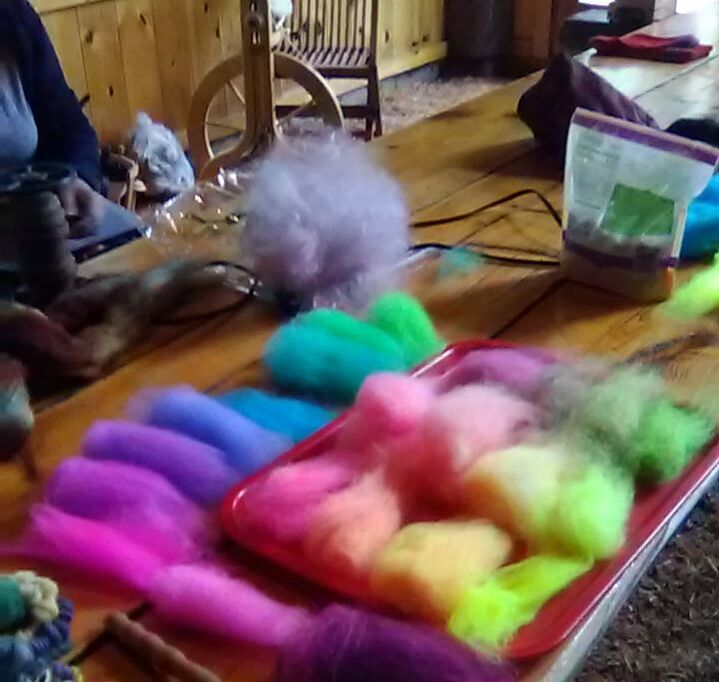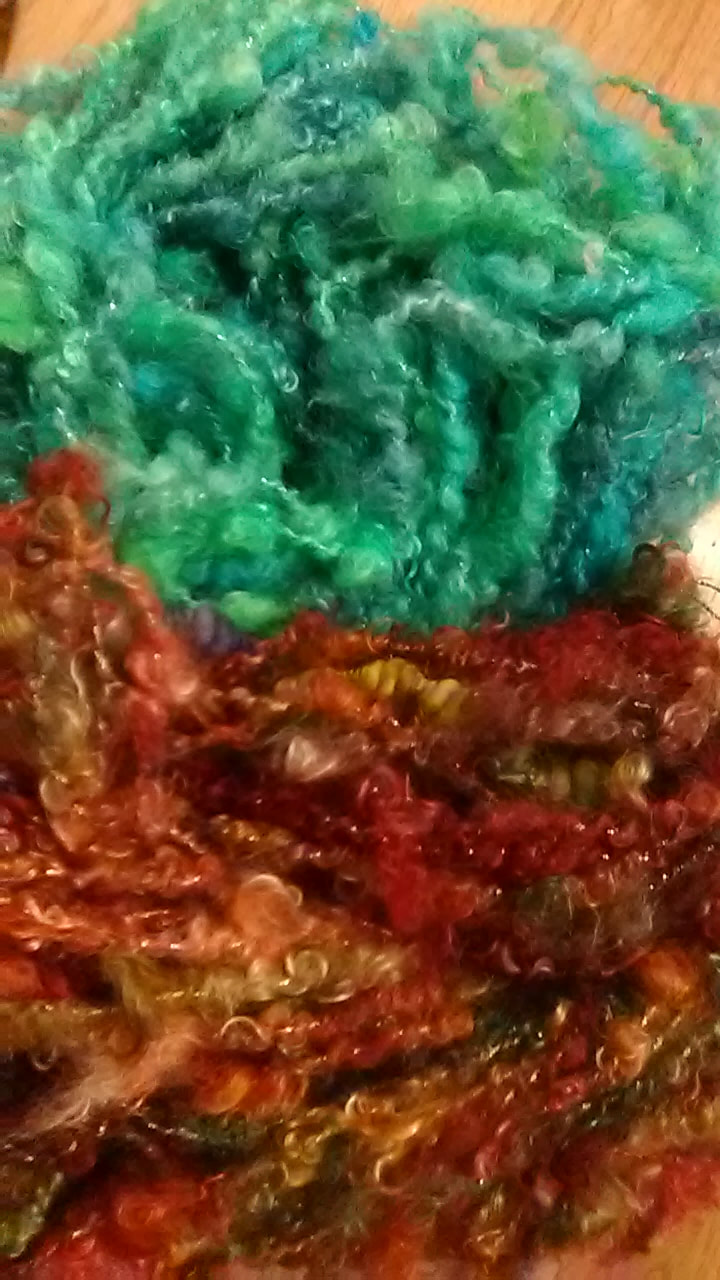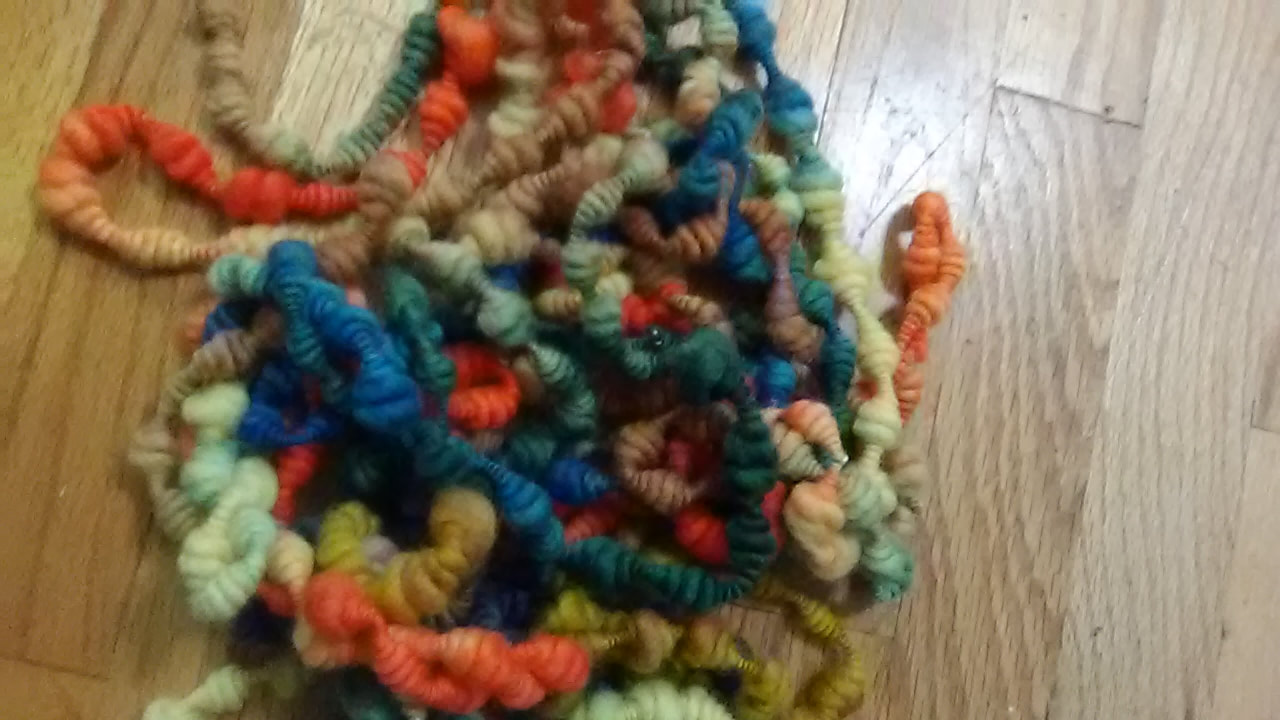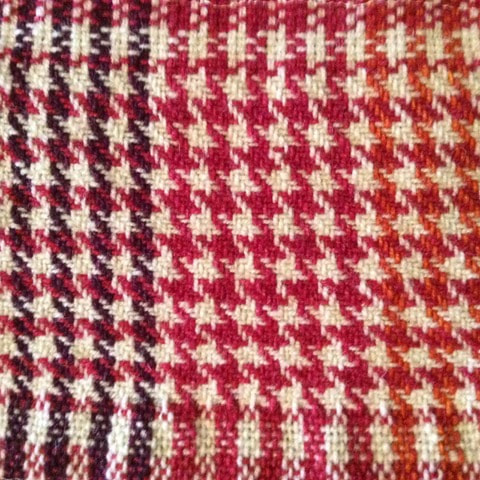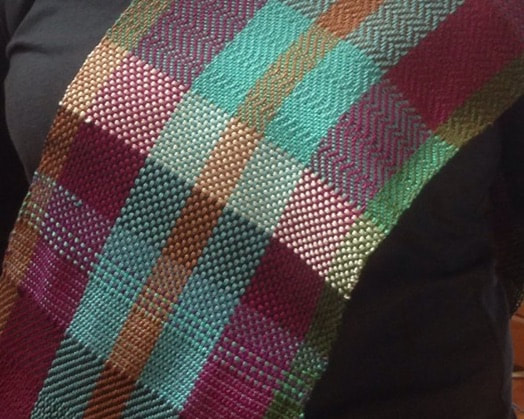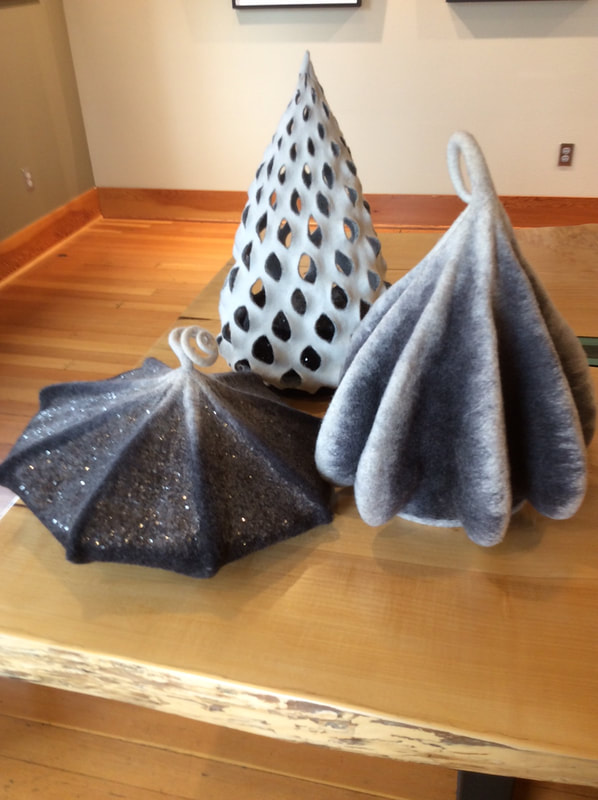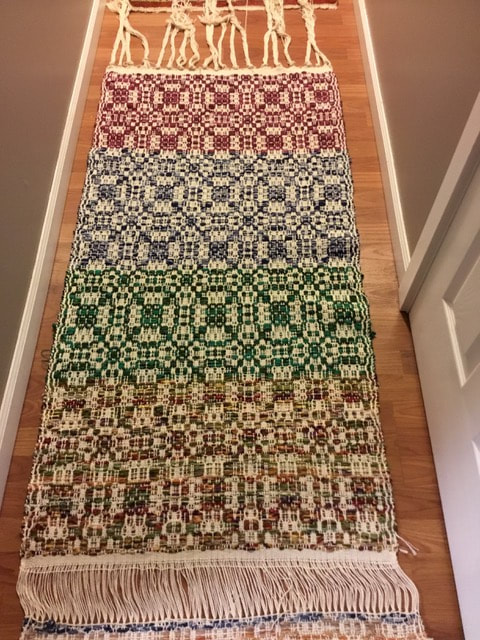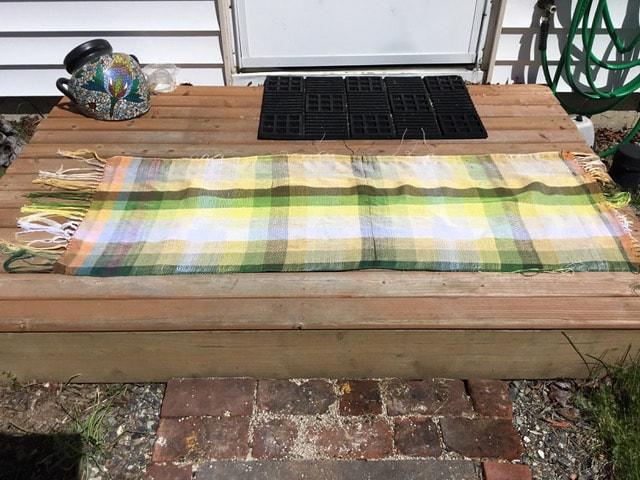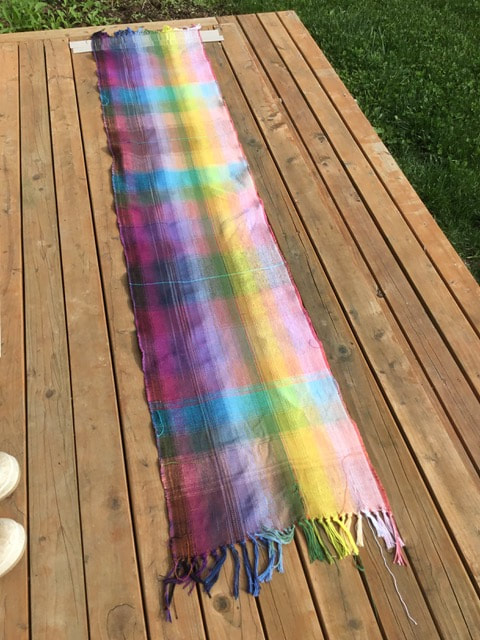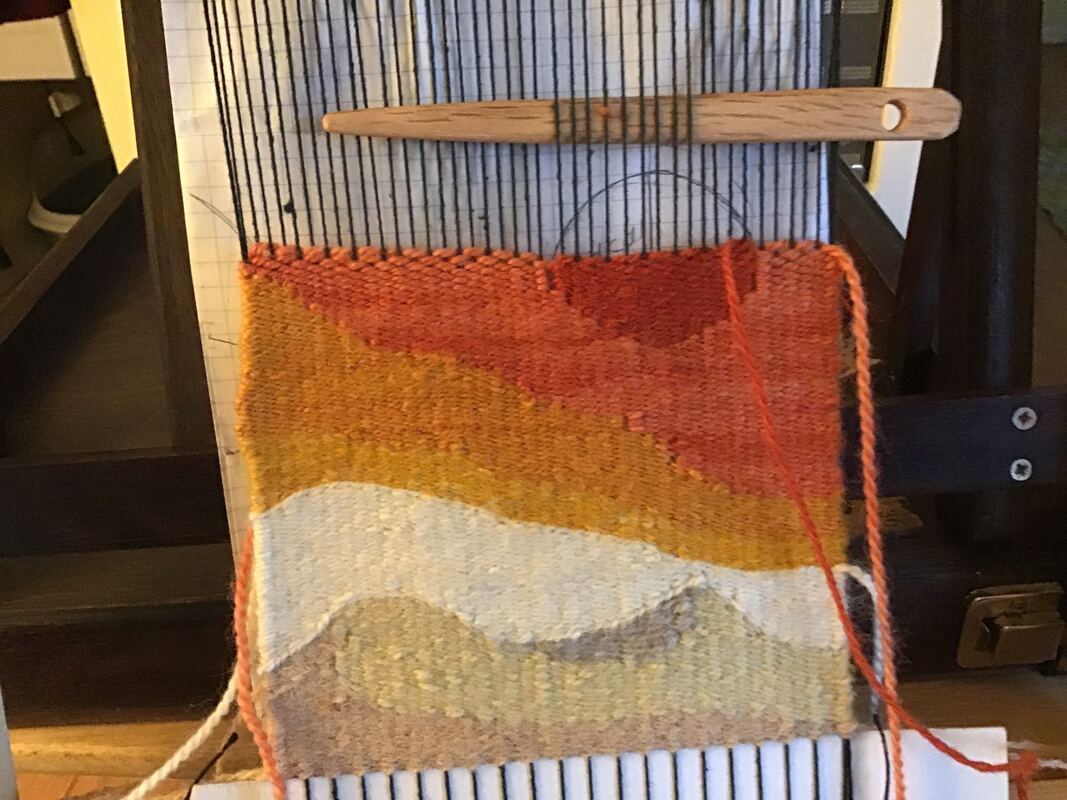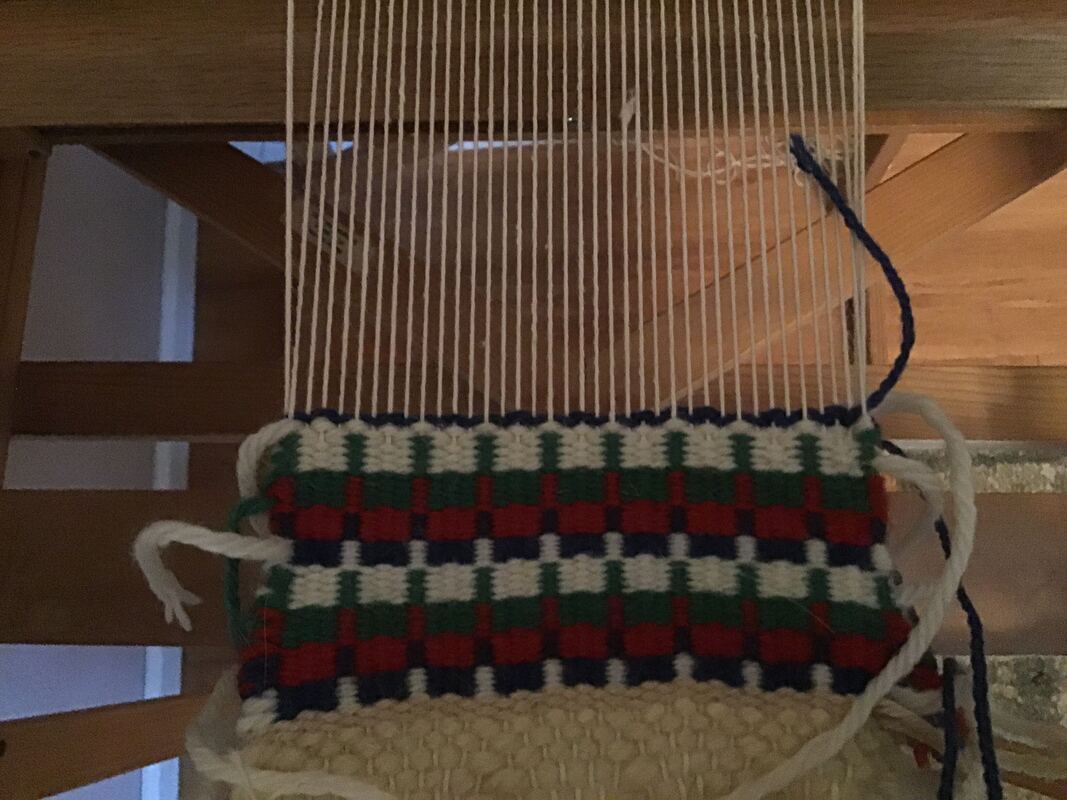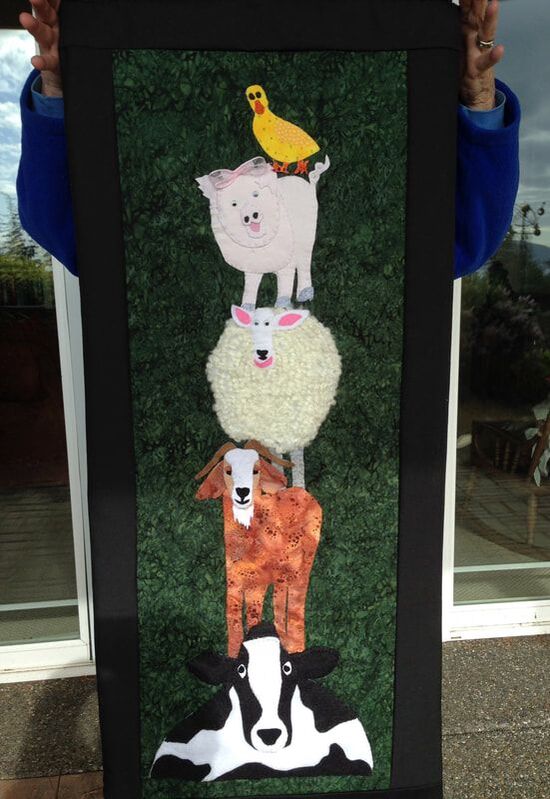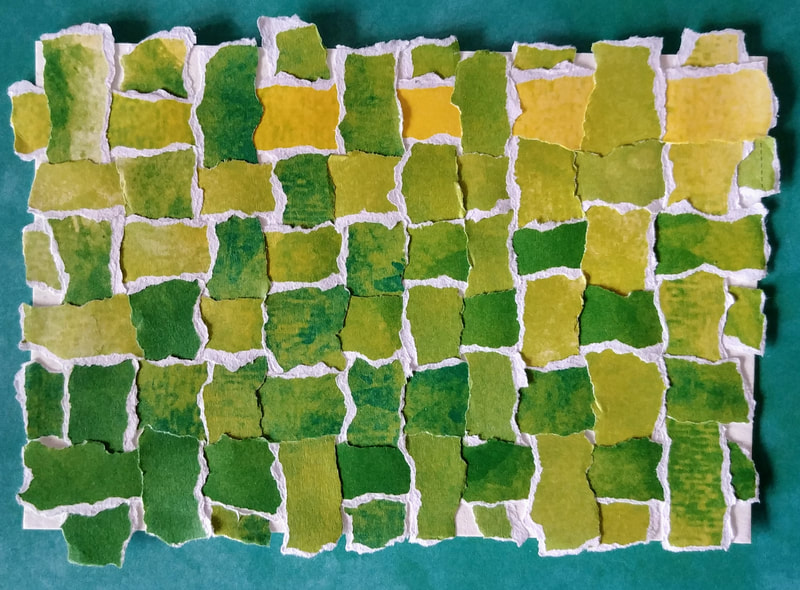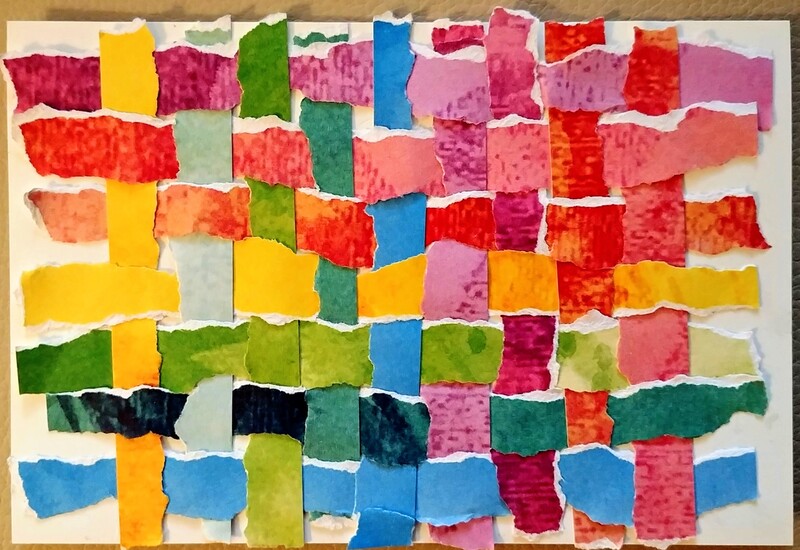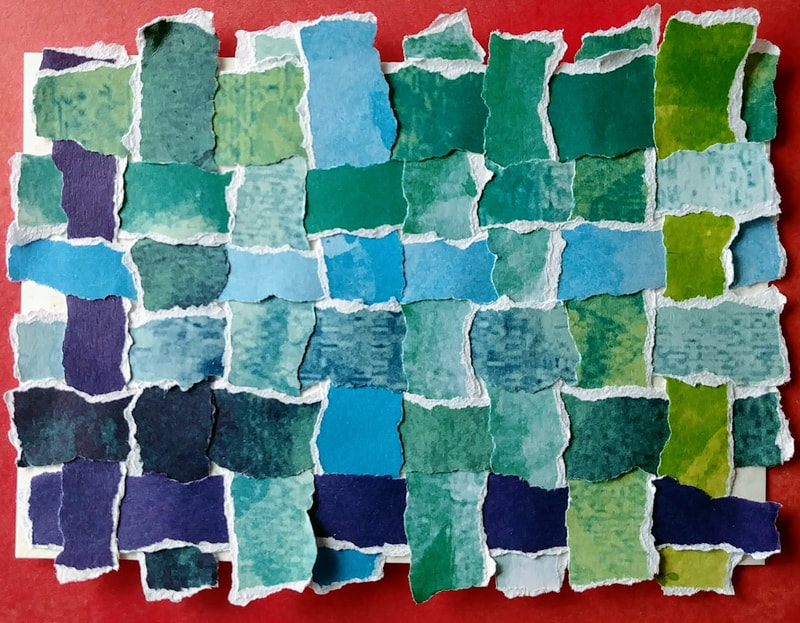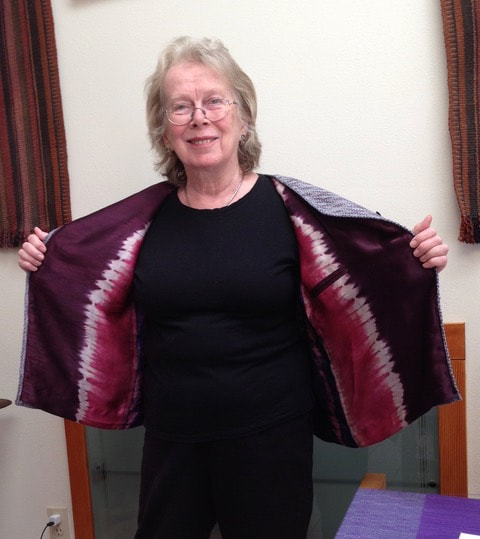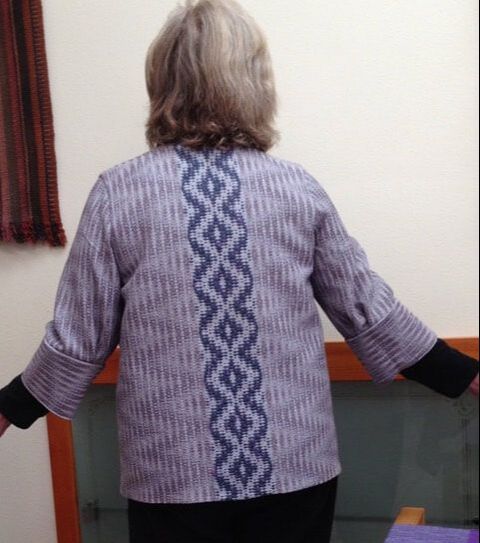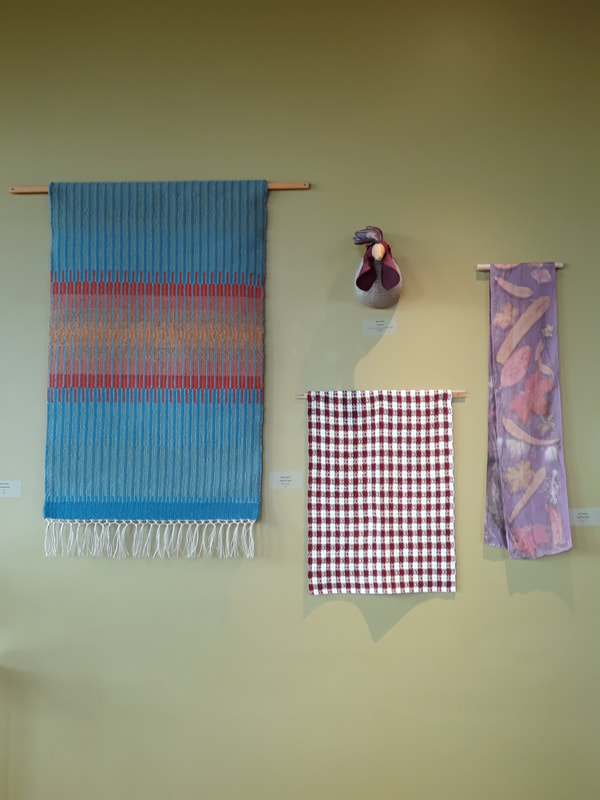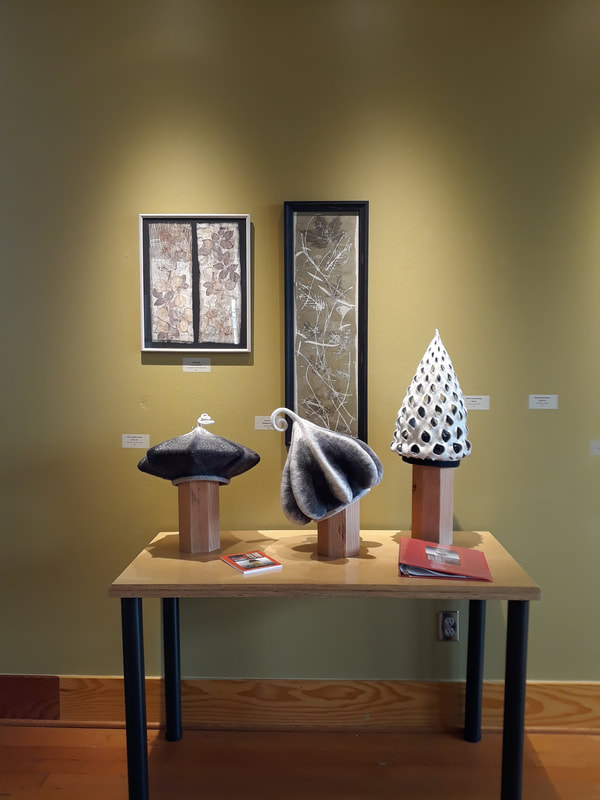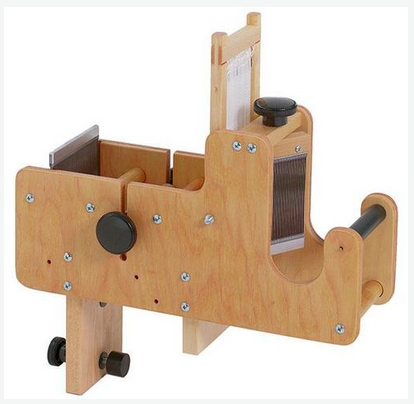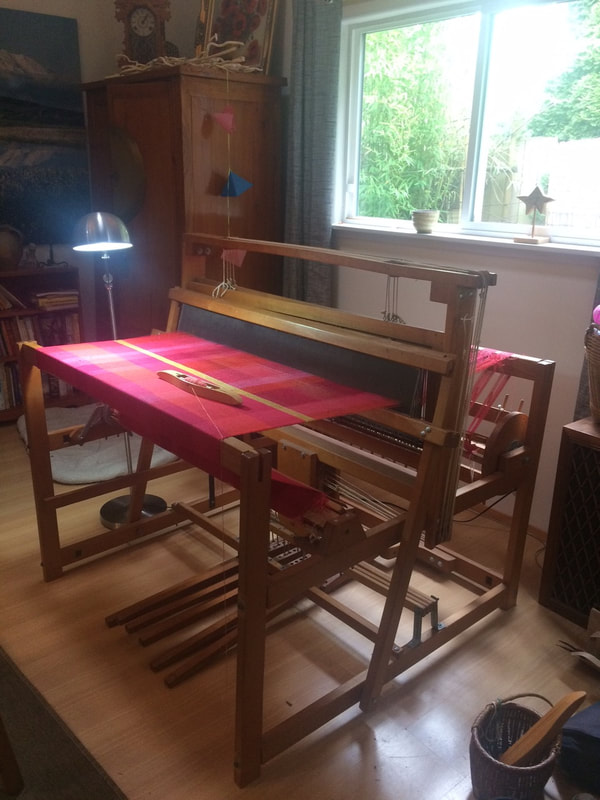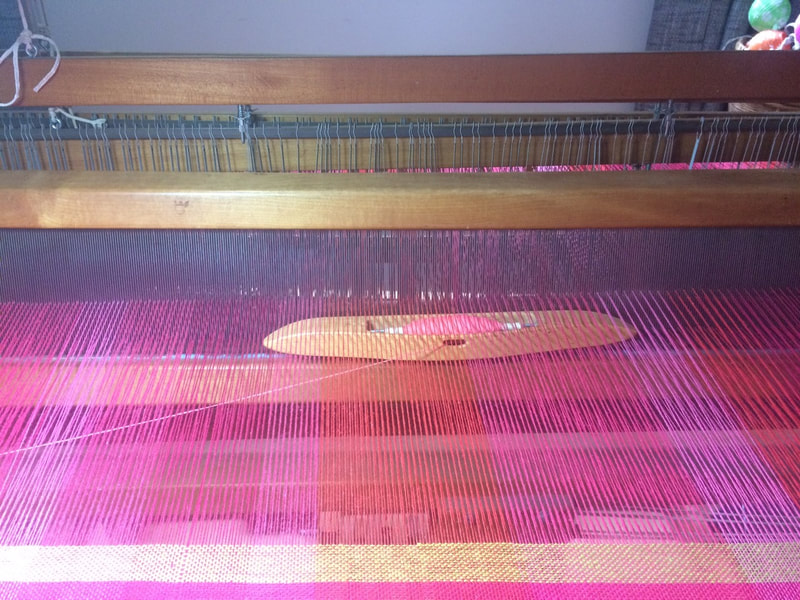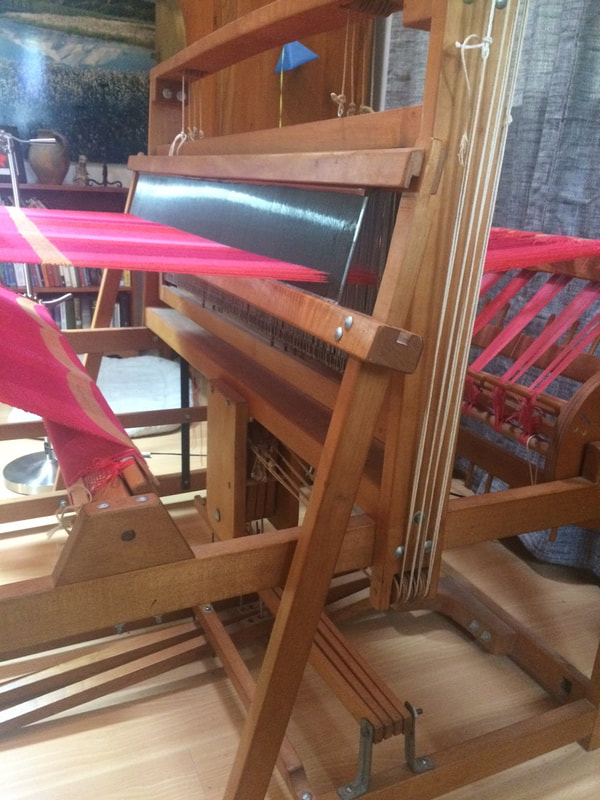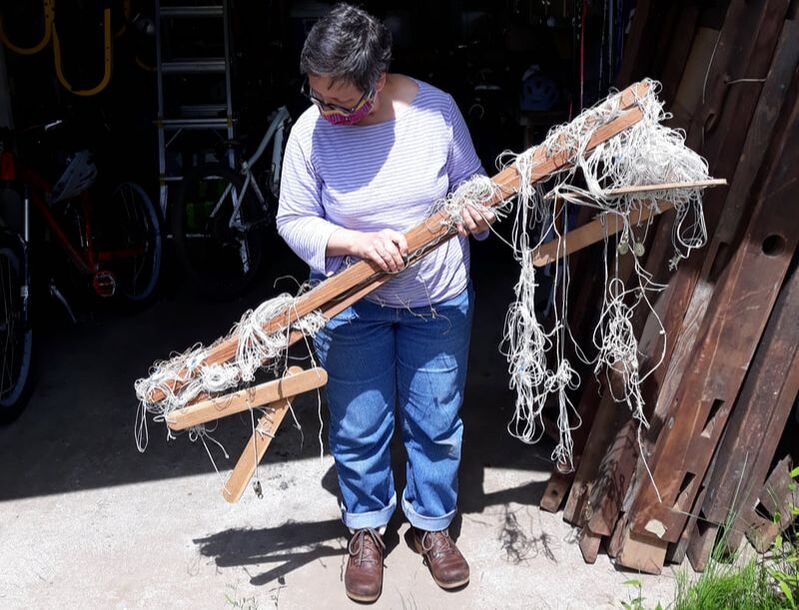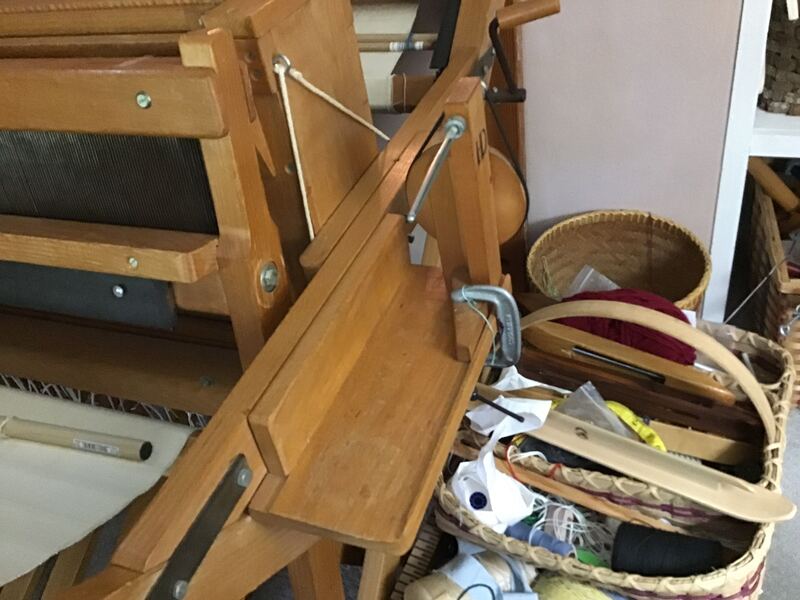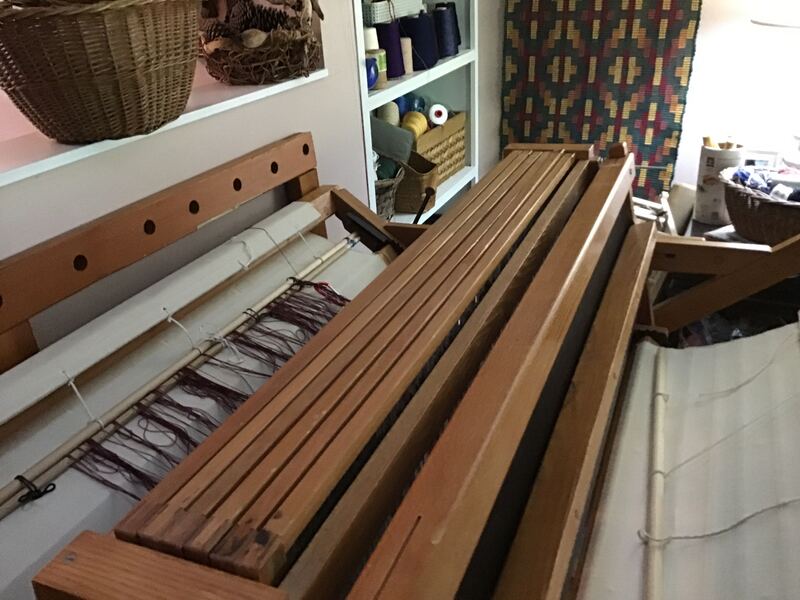July/August 2020 Newsletter
I enjoy having more than one project going at a time - especially in summer. One loom has a wool scarf on it, sampling for a blanket. One loom has towels. I’m designing a new pattern for the drawloom, which requires graph paper, pencil and a large eraser. The inkle loom is ready to be carried outside, when the weather allows and sunshine calls. Hemming towels is a nice portable activity - and finishing in a small group, in accordance with phase 2 guidelines for safety, is something I may be able to get into soon. Because I like to add woven band hanging loops to my towels, I am way behind on hemming - the bands have to match the towels! ( well, maybe that’s not the only reason I’m way behind on hemming)
|
So, on the latest project - inspired by the colors of the Hong Kong Ballet video in the June Newsletter, I tested the colors by weaving the inkle band first! The warp chains are measured, pre-sleyed, and on the loom, ready for winding on. When those towels are woven, I’ll be able to hem them right away! The structure is my current favorite for 4 shafts: 5-fold M’s and O’s from the M. Davison Book. M’s and O’s makes check patterns, with a variety of options in treadling and color use, and this pattern can weave checks within checks! Numerous patterns are possible on one threading! Take a look at the color samples in the photos below. I have a new appreciation for making yarn wraps, after the Linda Rees Color Challenge. |
|
Staying safe continues to be a bit of an emotional challenge, as cases of Covid rise in Whatcom County. I am grateful for my own health, vigilant for those around me, while savoring any chance to interact with Fiber Buddies. A group of five WWG members met last week for a Demo of beaming 10 yards of cottolin 22/2 warp for towels, onto Sharon Allen’s 8-shaft Baby Wolf Loom. (We are proud of our mask-making and wearing ability!)
|
Sharon had pre-measured the warp chains, and moved her loom out into the garage, with the door open onto the driveway. The weather held, and we had the warp beamed in less than an hour - then we chatted and enjoyed a little show and tell, distanced and masked. Sharon also brought out a new “aftermarket” piece of equipment, which raises the shafts to a comfortable height for threading and distinguishing between the heddles on each shaft. This is a handmade item, 3-D printed and gifted to Sharon by a weaving friend from outside our guild, and it is ingenious! Barry Schact, have you seen this? Sharon’s friend is not making these anymore - could something functional be made by gluing lego or duplo bricks together? Is there a woodworker or a 3-D printer in the area? Sharon is now happily threading her loom, under a canopy in her driveway.
|
Patty Dodge is enjoying her new puppy, Tonka, and reports that not so much weaving is getting done right now, and she’s trying not to feel guilty. Tonka looks like a super fun “High Fiber” project right now! What could be better than sunshine and weaving! Or sunshine and gardening, or sunshine and strawberries, or just sunshine! Hoping you are doing what keeps you energized, safe, healthy and happy in these trying times. Warm fuzzies to all, Carol Berry 2019-2020 WWG President |
